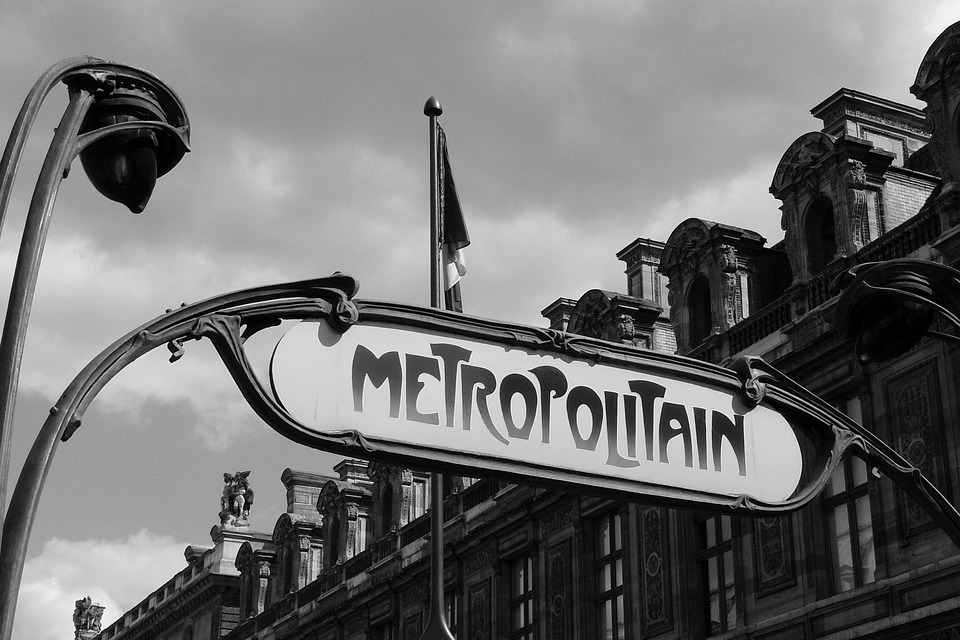There are a lot of things that I love about the Paris Métro. The fact that you’re never more than 400 metres from a station. The themed stations at Arts et Métiers, Concorde, and Bastille. How I can listen to a podcast instead of fighting traffic while getting anywhere I need to go in the city. Of course, there’s also a lot of things that drive me crazy about the Métro. And one of the big ones is that it does a terrible job of linking the outer arrondissements and adjacent suburbs. Its current design very much focuses on the city centre as a hub, meaning a trip from one outer district to another often involves a trip in and out of Paris. But that is slowly changing with the Grand Paris Express, a massive expansion project that is currently underway.
Over a Century of Train Lines
Before we get to that, a little history first. The Paris Métro first opened in 1900 as part of the 1900 World’s Fair. It was designed by Fulgence Bienvenüe, and originally featured 10 lines that crisscrossed through the city. Construction lasted for over 20 years, and by the 1920s, Hector Guimard’s famous Art Nouveau entrances had become an iconic symbol of Paris. Today, the Paris Métro spans 16 lines and 308 stations, and carries over four million passengers every day. This makes it the second busiest metro system in Europe after the Moscow Metro.
Connecting the Suburbs to the City
Interesting fact. The population of Paris today is almost the same as it was in the 1880s. There have been some minor fluctuations in that time. But overall, the city’s population has remained remarkably consistent. This is because various laws have restricted the height of new buildings for decades, meaning you can’t easily build more residential space. The suburbs however? No such restrictions exist, and the population of the greater Paris area, known as Île-de-France, grows with each passing year. Meaning more and more people rely on the suburban trains. So much so that suburban systems are often pushed to their limits on a daily basis.
Now, fun fact about the Paris transit system. Not all trains are the same. The Métro is different from the RER trains, which in turn are different from the Transilien trains. Confusing? Yes. But generally speaking, the Métro serves the city centre, while the RER and Transilien trains serve the suburbs. However, every Parisian knows that if you have the choice to live near a Métro station vs. a suburban line, you pick the Métro every time because it’s more reliable. Full disclosure, I have no idea if the stats actually back up this bias. But overall, being on a Métro line is much more preferable. And as the suburbs have continued to expand, so has the need for more Métro lines. Especially ones that connect the suburbs to each other.
Grand Paris Express
This is the primary goal of the Grand Paris Express. The project began planning in 2013, with construction starting in 2015 on four new Métro lines and extensions to two pre-existing lines. All together, the Grand Paris Express will see the construction of 68 new stations and over 200km of train lines. When completed, it will serve over two million passengers a day, connect both major Paris airports to the Métro system, and link adjoining suburbs in a way that will drastically decrease commutes. And before you ask, no, I’m not being paid by the Grand Paris Express to hype this project. I’ve just always been fascinated by infrastructure, and the Grand Paris Express is the largest current infrastructure project in Europe.
As you can imagine, an expansion project of this scale takes time. Construction may have started in 2015, but new stations only started opening in 2022. However, many sections of the Grand Paris Express are slated to open in time for the 2024 Olympics, so the next year will see several new openings and expansions. In particular, the expansion of line 14 to the north and south will open shortly before the start of Olympics, meaning Orly airport will be connected to the Métro system in time for the Games. Hopefully this will help transport the millions of visitors who are expected to descend upon the city next summer.
The Future of the Greater Paris Area
The entirety of the Grand Paris Express is scheduled to be completed by 2030. However, this is France, and I’m willing to bet every penny I own that the opening date will be delayed. Regardless, the coming decade will see a massive expansion of the Paris Métro. More importantly, it will allow people to easily move between suburbs without having to go into Paris. It is estimated that this will drastically reduce both traffic congestion and carbon emissions. It will also go a long way to equalizing access to services across the whole of the Greater Paris area. All of which are reasons why I’m excited to watch this project progress over the coming years.
Final note. Yes, I’m aware that getting excited about transit systems might strike some as odd. But I’ve always been fascinated by the logistics of moving people through cities. There’s no better city to watch this in action than Paris. Especially between now and 2030.
Laura Moore is a professional storyteller who loves history and the many stories that make Paris one of the most fascinating cities in the world. Join one of her signature tours to learn the story of a city.




